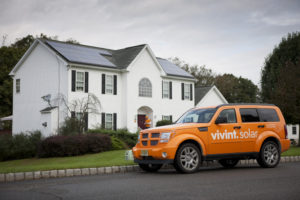By Haresh Patel
The next two years will be a bonanza for US solar investors aiming to capitalize on the 30% Investment Tax Credit. If you haven’t made your business New Years resolution here’s a recommendation.
10X your investments and grab market-share with the remaining 30% tax credit while also preparing for the hangover in 2017.
To achieve this goal, hiring alone is insufficient. There isn’t enough time or qualified people to hire. The executives that invest in tools and business processes to boost organizational productivity will dominate project acquisitions and, more importantly, maintain a lean cost structure that will be a must in 2017.
Time is of the essence
2 years may seem like a long time, but examining key investment milestones illustrates that solar investors only have a brief window to expand deal-flow before the ITC deadline.
Looking back to the 2011 expiration of the 1603 Treasury Grant we see that the real cutoff for solar investors actually came when banks stopped looking at projects, which hit about six months before the incentive expired. Therefore, while Dec 31, 2016 marks the COD deadline for the ITC, in order to syndicate financing, investors need all the critical elements of projects lined up by June 30, 2016. Performing diligence on the bare minimum aspects a project before it can be brought to a bank – conditional use permits, the off-take and interconnection agreements etc. – can take a month alone. Investors that need to bring in construction lenders or tax equity investors need even more time. This pushes back the time investors have to fill their deal pipelines even further, by a minimum of 1-2 months (April-May 30, 2016).
Second, the 2011 Treasury Grant expiration demonstrated that there will be severe financing bottlenecks as June 30, 2016 approaches. Banks will be inundated with so many potential projects it will give them the opportunity to pick and choose with discretion. Projects submitted later will face stiffer competition.
Hiring alone won’t solve your problem:
Solar investors that want to scale deal-flow by 10x, in time, solely by hiring more bodies should have done so yesterday. According to a study on hiring processes conducted by University of Chicago economists, filling vacancies in today’s economy takes between 5-12 weeks on average, depending on the size of the company. In the solar industry the available resource pool of high quality talent is small and competition is high. The next best option is to hire from outside the industry and train new employees, which adds another 6 months before they make a real impact. Meaning that onboarding a new group that is capable of boosting deal flow of a significant magnitude is not going to impact business until sometime between July-October 2015, at the earliest.
Putting it all together, a new team essentially has 7-10 months to fill a deal pipeline with 10x more viable projects.
This brief window emphasizes the need to maximize productivity. Investors need to invest in tools and processes that allow them to enhance origination and close deals quickly. Scaling a team by only adding bodies does not ensure success, the key to increasing deal-flow is maximizing the returns on the resources available.
Looking beyond the ITC
Solar investors that have had the foresight to begin scaling without addressing productivity may have limited success with top line growth, but they jeopardize their bottom lines. This will have severe consequences in 2017, when there will be an abrupt slowdown of investment opportunities. Companies with high cost structures will have an extremely difficult time achieving profitability. To compensate for shrinking incentives, solar investors need to learn how to consistently close more MW’s per employee. Implementing business processes that increase productivity today will insure a competitive business beyond the ITC.
Ultimately, solar investment is an execution play and the industry is maturing, which leaves a lot of room for business model improvements. Historical examples of successful execution oriented businesses demonstrate that winners often have the lowest cost structure. Dell Computer sold directly to customers to bypass middlemen, Amazon leveraged technology to keep a lean inventory and generate float, and Walmart is famous for extremely frugal corporate spending and, consequently, aggressive pricing to gain market-share. In solar, access to low cost of capital and a low cost structure will determine the winners. The industry is waiting for the companies with the best business model to emerge and dominate.
Haresh Patel is the CEO and co-founder of Mercatus Inc., a provider of cloud-based software solutions that simplify renewable energy investment.




